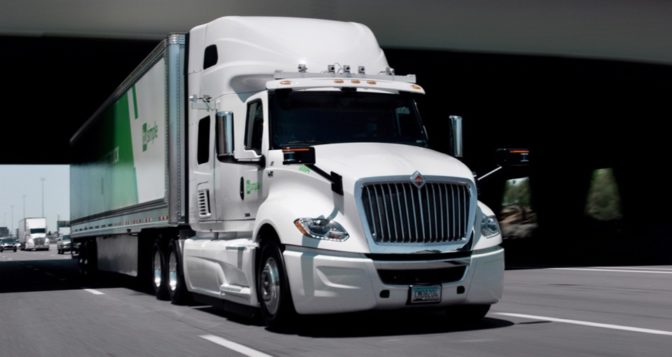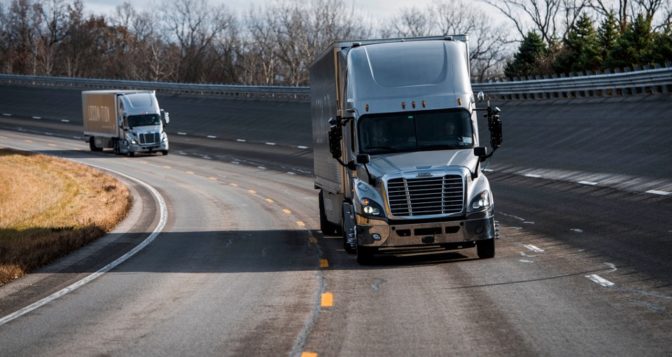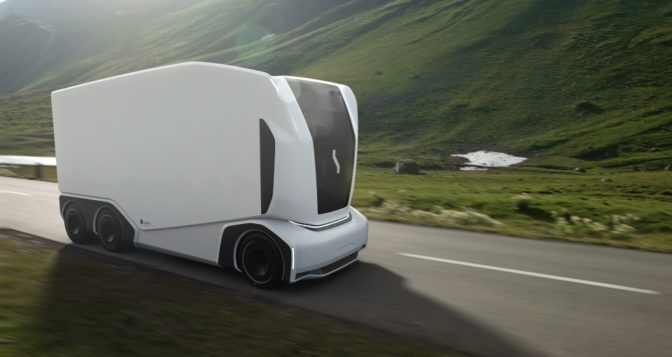For many, the term “autonomous vehicles” conjures up images of self-driving cars. Autonomy, however, is transforming much more than personal transportation.
Autonomous trucks are commercial vehicles that use AI to automate everything from shipping yard operations to long-haul deliveries. Due to industry pressures from rising delivery demand and driver shortages, as well as straightforward operational domains such as highways, these intelligent trucks may be the first autonomous vehicles to hit public roads at scale.
This technology uses long-range, high-resolution sensors, a range of deep neural networks and high-performance, energy-efficient compute to improve safety and efficiency for everyday logistics.
With the rise of e-commerce and next-day delivery, trucking plays an increasingly vital role in moving the world forward. Trucks transport more than 70 percent of all freight in the U.S. Experts estimate that most essential businesses, such as grocery stores and gas stations, would run out of supplies within days without these vehicles.
These trends come as driver shortages accelerate. The American Trucking Association reports the industry has struggled with driver supply over the past 15 years. It estimates the industry could be in need of 160,000 drivers by 2028 if trends continue. Additionally, limits on the amount of hours drivers can consecutively work restricts operation.
Autonomous driving can help ease the strain of trucking demand, as well as increase efficiency, by operating around the clock with lower requirements for human labor. In fact, a recent pilot run by self-driving trucking startup TuSimple and the U.S. Postal Service showed that autonomous trucks repeatedly arrived ahead of schedule on hub-to-hub routes.
And with hub-to-hub autonomous trucks constrained to fenced-in areas or highways, most autonomous trucks don’t have to deal with the challenges of urban traffic and neighborhood driving, freeing up roadblocks to widespread deployment.
This groundbreaking development is possible in part due to centralized, high-performance compute such as the NVIDIA DRIVE platform. With the capability to process the redundant and diverse deep neural networks necessary to operate without human supervision, these vehicles are poised to revolutionize delivery and logistics in the years to come.
Scalable Solutions for the Long Haul
Autonomous driving is a scalable technology. The Society of Automotive Engineers (SAE) defines it in categories that include assisted driving where the driver is still in control (level 2) as well as full self-driving, where no human supervision is required (level 4/5). AI compute must also be able to scale with the capabilities of self-driving software.
In addition, the system must be able to handle the harsh environments of trucking. The average truck driver travels 100,000 miles a year, compared with the average motorist, who drives about 13,500 miles a year.
NVIDIA DRIVE is the only solution that easily scales from level 2 AI-assisted driving to fully autonomous operation while being designed to withstand the wear and tear of long-haul trucking.
This versatility and durability is already in development today. Companies such as Locomation are leveraging the compute platform for platooning pilots, where one driver operates a lead truck while a fully autonomous follower truck drives in tandem. Truck manufacturer FAW and startup PlusAI are jointly developing a large-scale autonomous trucking fleet. TuSimple uses NVIDIA DRIVE in its fleet.
On the Open Road
Beyond improving current trucking practices, autonomous driving technology is opening up entirely new possibilities for the industry.
Volvo Group, one of the largest truck makers in the world, is using NVIDIA DRIVE to train, test and deploy self-driving AI vehicles, targeting public transport, freight transport, refuse and recycling collection, construction, mining, forestry and more.
It’s even envisioning cab-less operation within shipping yards and on industrial roads with the Vera pilot truck.
Self-driving truck startup Einride is also developing cab-less vehicles. It recently announced the next generation of its Pod trucks, powered by NVIDIA DRIVE AGX Orin. These futuristic electric haulers will be able to scale from closed-facility operation to fully autonomous driving on backroads and highways.
With high-performance, energy-efficient AI compute at the core, autonomous trucks will push the limits of what’s possible in delivery and logistics, transforming industries around the world.
The post The Truck Stops Here: How AI Is Creating a New Kind of Commercial Vehicle appeared first on The Official NVIDIA Blog.




